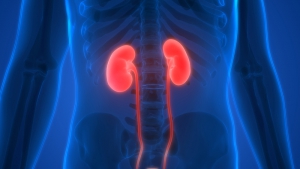Dialysis Catheters
A minimally invasive procedure for patients that require dialysis
Most people have two kidneys, which are responsible for removing water, waste, and certain toxins from the blood.
The waste elements travel from the kidneys to the bladder through the ureter before ultimately leaving the body as urine.
When the kidneys are not functioning properly, these waste elements must be filtered out of the blood with help from hemodialysis, or dialysis for short.
A hemodialysis machine can compensate for poor renal function by filtering the blood outside of the body and returning the “clean” blood back to the patient.
The patient’s blood will get to and from the hemodialysis machine by traveling through a catheter, which can be placed by an interventional radiologist with a minimally invasive procedure.

A dialysis catheter includes tubing that carries blood in each direction: both from the body to the dialysis machine and back into the body once the dialysis machine has done its job.
Non-Tunneled Catheter
Some patients require dialysis on a more short term basis. When this is the case, a non-tunneled catheter might be chosen. A non-tunneled catheter is inserted directly into a large vein and is typically recommended to be used for a matter of weeks.
Tunneled Catheter
A tunneled catheter travels under the skin for several inches before being inserted into a vein, and can typically be used for a longer period of time than a non-tunneled catheter.
